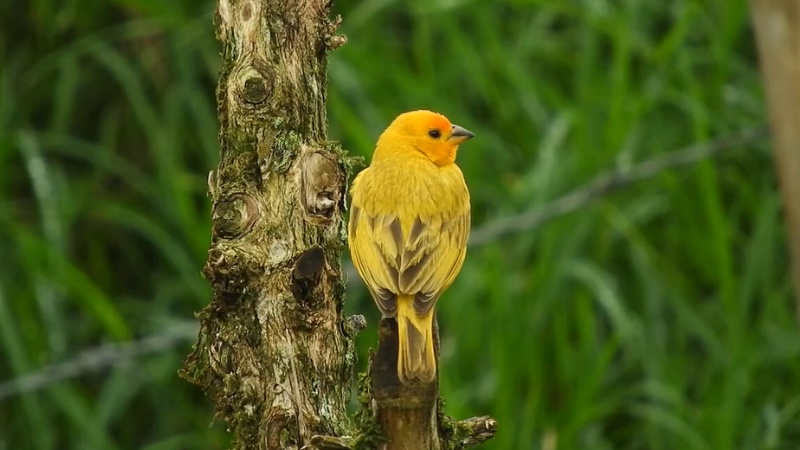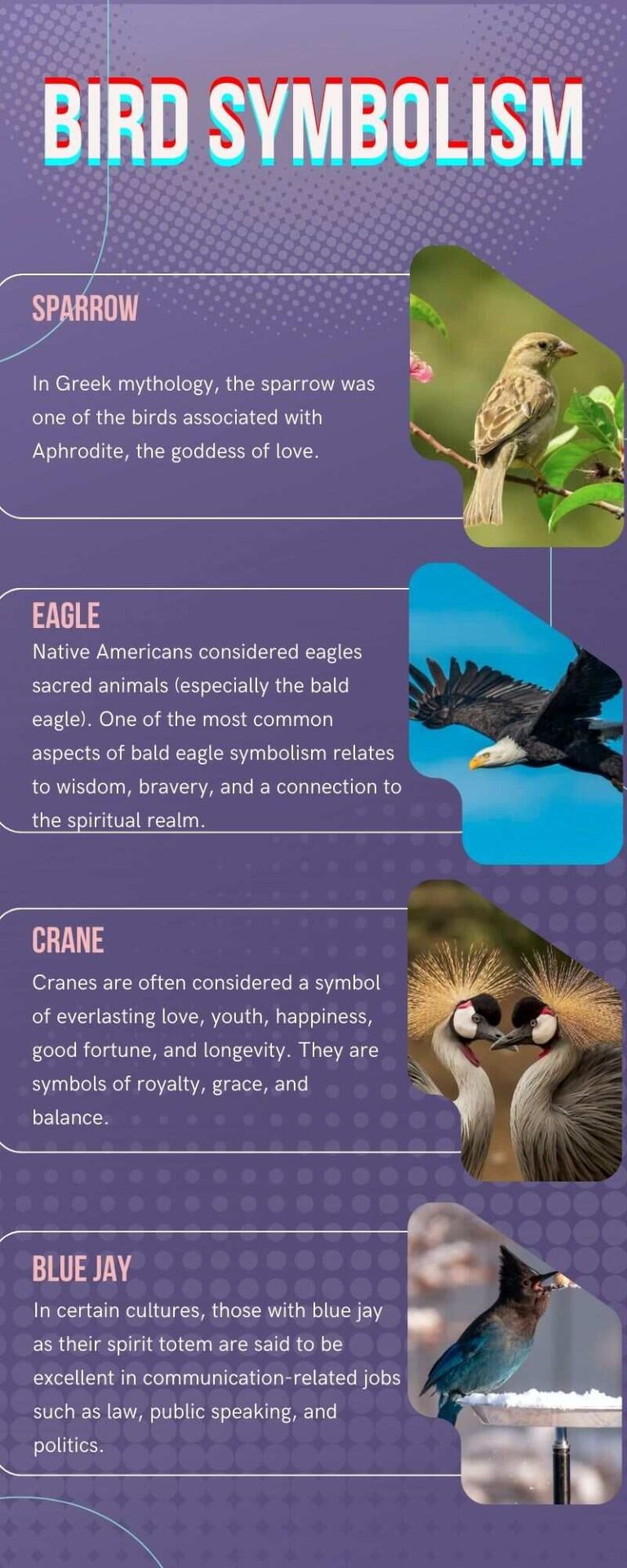30 Small Yellow Birds: Tweet Delights
Small yellow birds are a delightful sight to behold.
With their vibrant plumage and cheerful melodies, these feathered wonders captivate our attention and bring a touch of sunshine to our surroundings.
Now, we will embark on a journey to explore the enchanting world of these tiny avian treasures.
From their physical characteristics to their habitats and unique behaviors, we will uncover the secrets of these small yellow birds that make them truly special.
30 Small Yellow Birds and Their Unique Features
1. American Goldfinch:
With its vibrant yellow plumage, the American Goldfinch is a common sight across North America. It undergoes a color change throughout the year, donning a bright yellow coat during the breeding season.
2. Yellow Warbler:
This dainty bird is known for its bright yellow feathers and reddish-brown streaks on its breast. It prefers shrubby habitats near water bodies, where it can easily forage for insects.
3. Common Yellowthroat:
Thriving in wetlands and marshy areas, the Common Yellowthroat displays a black mask on its face and a yellow throat. It utilizes its melodious song to establish territories and attract mates.
4. Wilson’s Warbler:
With its olive-green back and vibrant yellow underparts, the Wilson’s Warbler constructs cup-shaped nests close to the ground using grasses, leaves, and moss.
5. Ruby-crowned Kinglet:
Measuring only 4 inches in length, this small yellow bird displays a hidden ruby-red crown during its intricate aerial displays, particularly during courtship.
6. Pine Warbler:
Found in pine forests, the Pine Warbler showcases a yellowish-green plumage and often joins large flocks during migration, creating a mesmerizing sight of yellow hues.
7. Yellow-rumped Warbler:
This warbler species features a yellow rump, giving it its name. It forms large flocks during migration and exhibits a diverse diet, including berries and insects.
8. European Goldfinch:
Sporting a vibrant red face and a golden-yellow body, the European Goldfinch is a beloved small yellow bird found across Europe.
9. Hooded Warbler:
Easily recognizable with its black hood and bright yellow face, the Hooded Warbler resides in woodland habitats, singing its distinctive song.
10. Blue-winged Warbler:
Despite its name, this warbler species boasts vibrant yellow plumage with subtle blue accents on its wings. It prefers open woodlands and shrubby areas.
11. Yellow-throated Warbler:
With its striking black-and-white patterned face and bright yellow throat, this warbler inhabits southeastern woodlands and cypress swamps.
12. Golden-crowned Kinglet:
While small in size, this bird exhibits a fiery orange-yellow crown, contrasting with its olive-green body. It is known for its high-pitched, rapid song.
13. Palm Warbler:
Found in wetland areas, the Palm Warbler displays a yellow underbelly and constantly wags its tail, making it easily distinguishable.
14. Yellow-breasted Chat:
This songbird showcases a bright yellow breast and a variety of vocalizations, mimicking the songs of other bird species.
15. Prothonotary Warbler:
With its stunning golden-yellow plumage, the Prothonotary Warbler nests in tree cavities near water and is known for its rich, ringing song.
16. Yellow-headed Blackbird:
Although predominantly black, the male of this species possesses a striking yellow head, which contrasts with its dark body.
17. Nashville Warbler:
Sporting a gray head and a yellow throat, this warbler species is often found in dense thickets and coniferous forests.
18. Yellow-bellied Flycatcher:
With its olive-green back and bright yellow underparts, this small bird catches insects on the wing and exhibits a distinctive call.
19. Yellow-faced Grassquit:
Native to Central and South America, this tiny finch-like bird showcases a yellow face and resides in grassy habitats.
20. Yellow-throated Vireo:
Known for its sweet, echoing song, this vireo species possesses a bright yellow throat and can be found in deciduous forests.
21. Yellow-winged Cacique:
Found in Central and South America, this bird has bright yellow wings and builds intricate hanging nests in trees using fibers and grasses.
22. Yellow-crowned Euphonia:
With its striking yellow crown and contrasting blue-black body, this small bird can be found in tropical forests, often feeding on fruits and insects.
23. Yellow-fronted Canary:
Commonly kept as a pet, this canary species displays a yellow face and chest, often singing a melodious song.
24. Yellow-vented Bulbul:
Native to Southeast Asia, this small yellow bird features a bright yellow vent and is known for its pleasant vocalizations.
25. Yellow-browed Warbler:
A migratory bird with a distinct yellow supercilium (eyebrow), it breeds in Siberia and winters in Southeast Asia.
26. Yellowhammer:
This bird, with its bright yellow head and underparts, is a common sight in farmland and open country areas across Europe.
27. Yellow-faced Honeyeater:
Found in Australia, this honeyeater species has a yellow face and is known for its nectar-feeding habits.
28. Yellow-shouldered Amazon:
A parrot species native to Venezuela and Bonaire, this bird displays yellow shoulders and is highly vocal.
29. Yellow-bellied Sapsucker:
With its yellow belly and red crown, this woodpecker species can be found in North America and is known for drilling holes in trees to feed on sap.
30. Yellow-tufted Honeyeater:
Native to Australia, this honeyeater features a distinctive yellow tuft of feathers on its head and resides in eucalypt forests.
Note:
These small yellow birds, with their unique features and behaviors, contribute to the rich tapestry of avian diversity.
Each species has its own special charm, adding a splash of color and melody to the natural world.
Whether they are flitting through forests, singing from treetops, or engaging in acrobatic displays, these small yellow birds never cease to fascinate and captivate observers lucky enough to witness their presence.
A Colorful Tapestry: Physical Characteristics of Small Yellow Birds
Small yellow birds come in a variety of species, each displaying its unique charm. Their small size and vibrant yellow feathers make them stand out amidst the foliage and the sky.
One such example is the American Goldfinch (Spinus tristis), a popular yellow bird found across North America.
It possesses a slim build, measuring around 4.5 to 5 inches in length, and its plumage changes color throughout the year.
During the breeding season, the male dons a brilliant yellow coat, while the female exhibits a more subdued olive-green hue.
Another notable small yellow bird is the Yellow Warbler (Setophaga petechia). It boasts a dainty appearance with its slender body, reaching about 4.5 inches in length.
As the name suggests, this species is adorned in bright yellow feathers, accentuated by streaks of reddish-brown on its breast.
The vibrant colors of small yellow birds serve various purposes, including attracting mates and signaling their presence within their habitat.
Diverse Habitats: Where Small Yellow Birds Call Home
Small yellow birds inhabit a wide range of ecosystems, showcasing their adaptability and resilience. They can be found in forests, woodlands, meadows, and even suburban gardens.
Each species has its preferred habitat, ensuring their survival by capitalizing on available resources.
For instance, the Common Yellowthroat (Geothlypis trichas) is a small yellow bird that thrives in wetlands and marshy areas.
These habitats provide an abundant supply of insects, which make up a significant portion of their diet.
The yellow warbler, on the other hand, prefers to nest in shrubby areas near water bodies, such as streams and ponds.
This habitat choice allows them to easily forage insects and build their nests in a secure environment.
Chirpy Conversations: Vocalizations of Small Yellow Birds
Small yellow birds are renowned for their melodious tunes that grace the air. Their songs are often intricate and captivating, serving multiple purposes in their social interactions.
These birds communicate through various vocalizations, each conveying a distinct message.
The American Goldfinch’s song is a cheerful, lilting melody, resembling the sound of “po-ta-to-chip.” Male goldfinches use their melodious voice to establish territories and attract mates during the breeding season.
In contrast, the Yellow Warbler’s song is a series of sweet, rapid notes, reminiscent of the phrase “sweet-sweet-sweet, I’m so sweet!” These tuneful expressions are utilized by males to proclaim their presence and court potential mates.
Nature’s Little Acrobats: Behaviors of Small Yellow Birds
Small yellow birds exhibit fascinating behaviors that showcase their agility and resourcefulness. Observing their acrobatic maneuvers can be a treat for any bird enthusiast.
One remarkable example is the aerial display of the Ruby-crowned Kinglet (Regulus calendula). This small yellow bird, measuring around 4 inches long, performs an intricate flight pattern.
It hovers in mid-air while flitting its wings rapidly, revealing a hidden ruby-red crown.
This captivating behavior is often exhibited by males during courtship, signaling their vitality and attractiveness to potential mates.
In addition to their aerial prowess, small yellow birds also display remarkable nest-building skills.
The Wilson’s Warbler (Cardellina pusilla) constructs its nest in the shape of a cup, meticulously weaving together grasses, leaves, and moss.
These cozy abodes are typically positioned close to the ground, providing protection from predators and blending seamlessly with the surrounding vegetation.
Another interesting behavior is the flocking tendency observed in some small yellow bird species.
Birds like the Pine Warbler (Setophaga pinus) and the Yellow-rumped Warbler (Setophaga coronata) often form large flocks during migration, creating a dazzling display of yellow hues as they move in unison.
Flocking offers safety in numbers, increases foraging efficiency, and enables effective communication among individuals.
Conservation Concerns: Protecting Small Yellow Birds
Despite their beauty and charm, small yellow birds face various threats that jeopardize their populations.
Habitat loss due to urbanization, deforestation, and climate change poses a significant challenge.
These birds rely on specific habitats for breeding, foraging, and nesting, and any disturbance or destruction of these habitats can have severe consequences.
To conserve small yellow birds and their habitats, efforts are being made to create protected areas and raise awareness about the importance of preserving their ecosystems.
Bird enthusiasts and conservation organizations play a crucial role in monitoring populations, advocating for habitat preservation, and implementing measures to mitigate the impact of human activities.
Final thoughts
Small yellow birds bring joy and wonder to our lives with their vibrant plumage, melodious songs, and captivating behaviors.
From the American Goldfinch to the Yellow Warbler and beyond, these tiny avian wonders remind us of the beauty and diversity of the natural world.
By understanding their physical characteristics, habitats, vocalizations, and behaviors, we gain a deeper appreciation for these small but mighty creatures.
Let us cherish and protect them, ensuring that future generations can continue to marvel at the sight of small yellow birds gracing our skies.


